Type 1: Restoration Programs
When is 60% not 60%?
Group Long Term Disability insurance does not typically insure bonus, commission, equity-based pay, retirement contributions, or other variable compensation. There is also an absolute monthly cap such as $10,000 per month.
As a result, the actual benefits for some employees pencil out to less than 60%.

To restore parity of income replacement ratios, individual disability insurance policies are issued - as a supplement - on the affected employees. There is no need to cover everyone.
These are called Restoration IDI programs.
Type 2: Voluntary and Executive IDI Programs
Get Closer to 100% Income Replacement
Voluntary IDI and Executive IDI programs aim to increase overall income replacement ratios above 60% to maintain lifestyle stability. It's called voluntary or executive depending on whether the premium is paid by employees or the employer. Either way, the objective is the same - to get closer to 100%.
People need more than 60% primarily to maintain lifestyle and meet financial obligations to loved ones. This is especially true for people that earn a lot for the express purpose of supporting family, a large house, nicer cars, and kids' college. Anyone who has tried it knows the anguish of going backwards in lifestyle, especially with a family.
There are two "surprise" reasons people need more than 60%. These reasons relate to the loss of health insurance and retirement benefits when no longer actively at work.
Could you afford the additional expense of COBRA premiums?
Having to absorb COBRA premiums on top of already challenging 40% pay cut can cause a financial tailspin, especially with a family to support.

Additionally, forced early retirement carries real financial consequences. If 401(k) contributions are suspended during a period of disability (and by law, they are), what is a person to live on when disability benefits end?
Until a person can afford to retire, all earnings are essential.
What Replaces Retirement Contributions?
Forced early retirement is serious. To stay on track, supplemental disability insurance can be designed to get person to 100% income replacement. Learn more...
Supplemental Disability Income insurance mitigates these problems by getting employees closer to replacing 100% of earnings.
Group LTD is Not Enough, By Design
Group LTD is optimized for keeping employer costs down, which is achieved by getting employees off-claim and back to work as soon as possible. To achieve this, group insurers rely on formulaic adjustments to keep the benefit down and maintain financial pressure to encourage cooperation.
Learn more in our blog post:
Supplemental IDI Programs Consist of a Series of Individual Policies
With Supplemental Disability Income insurance, each employee is issued their own individual policy. Coverage must be in the form of individual policies in order to prevent group benefits from being offset.
Upon separation, the insurance company redirects the bill to the individual for the same premium, but the individual can always choose to let the policy lapse. Going forward, the policy does not depend on the sponsoring employer in any way.
Each policy is individually curated by the insurer based on a snapshot of exposed earnings (that is, what group LTD is not insuring).
Individual policy benefits are not based on a percentage of earnings. Rather, they pay a specified fixed-dollar monthly indemnity benefit (for example, $10,000 per month) independent of any other benefit sources the individual receives. The size of each policy is periodically upgraded to keep pace with rising earnings, though it is never downgraded even if compensation declines.


